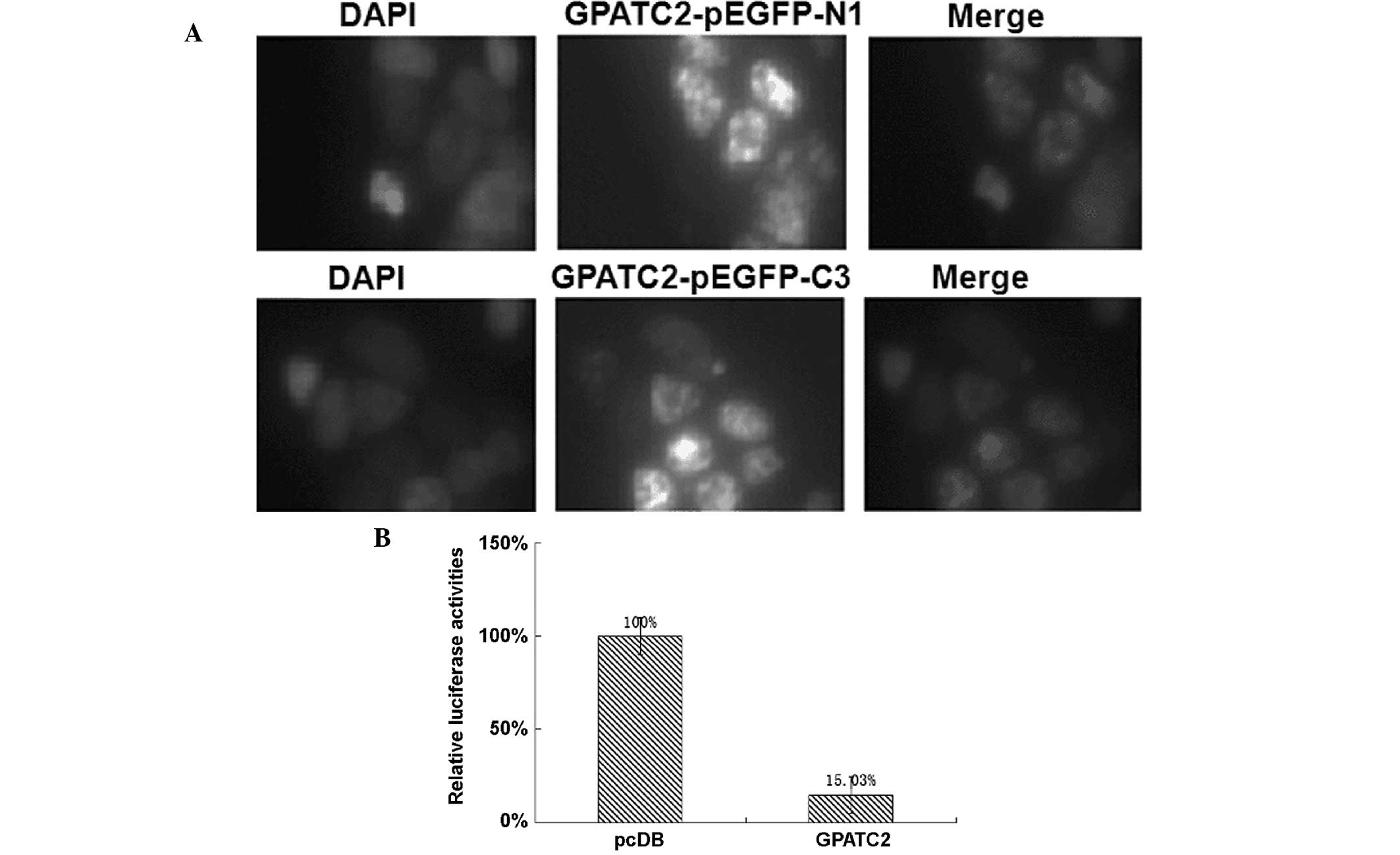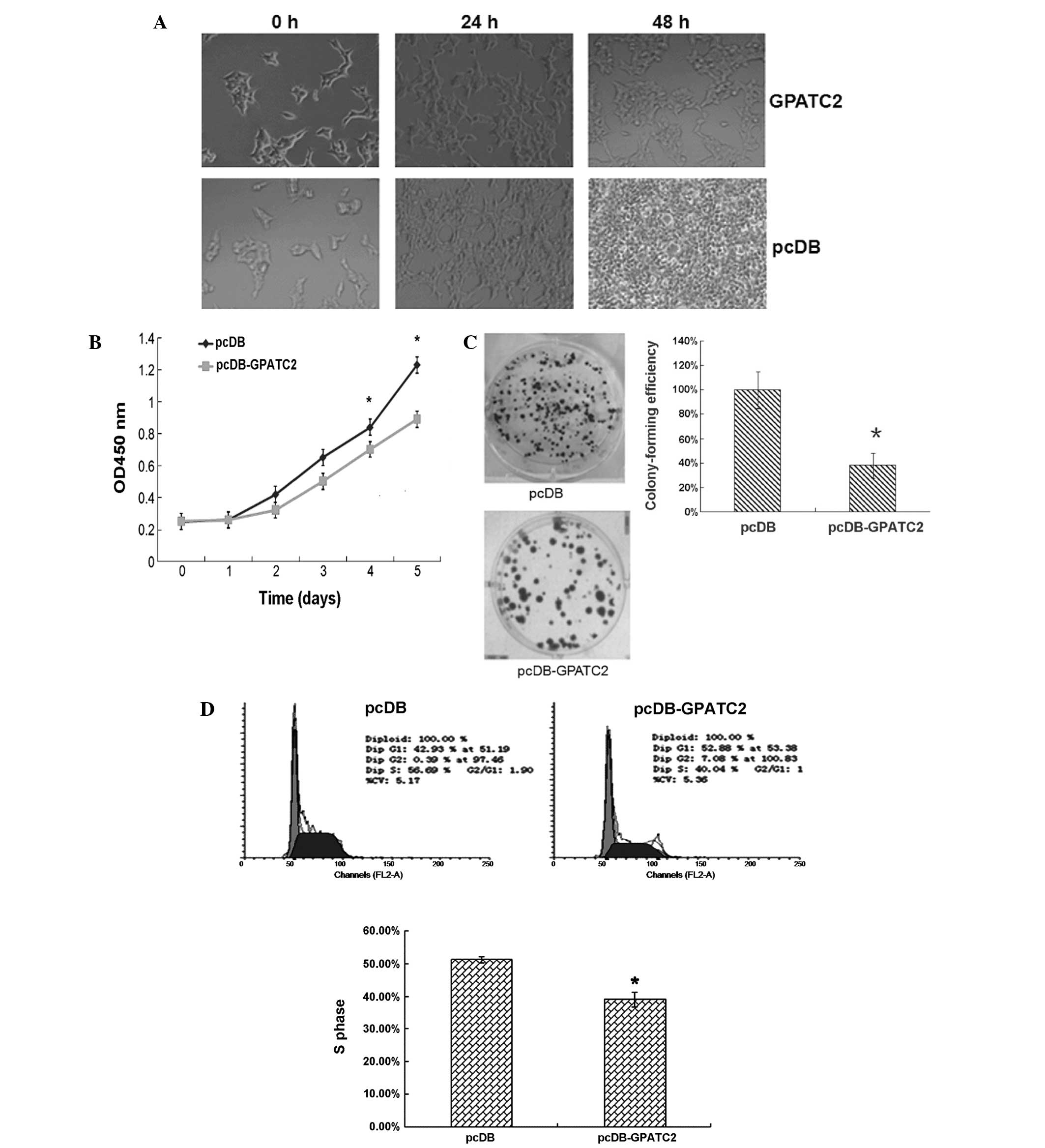G-patch domain containing 2, a gene highly expressed in testes, inhibits nuclear factor-κB and cell proliferation
- Authors:
- Published online on: November 5, 2014 https://doi.org/10.3892/mmr.2014.2870
- Pages: 1252-1257
Metrics: Total
Views: 0 (Spandidos Publications: | PMC Statistics: )
Total PDF Downloads: 0 (Spandidos Publications: | PMC Statistics: )
Abstract
G-patch domain containing 2 (GPATC2), a human gene that is highly expressed in the testes, was implicated as a novel cancer/testis antigen. The present study investigated GPATC2 expression in a number of human cell lines and rat tissues, and its potential biological function in 293T cells. Semi‑quantitative reverse transcription-polymerase chain reaction analysis showed that GPATC2 was widely expressed in 15 human cell lines (representing different lineages) and in 11 different rat tissues, and that the GPATC2 mRNA relative expression level was significantly higher in the testis than it was in other tissues. 293T cells were transiently transfected with GPATC2-p enhanced green fluorescent protein (EGFP)‑N1 or GPATC2-pEGFP-C3 and the nuclei were stained with 4',6'‑diamidino‑2‑phenylindole. The results showed that GPATC2 is predominantly expressed in the nucleus of 293T cells. Overexpression of GPATC2 may inhibit transcription of the NF-κB reporter gene. The role of GPATC2 in proliferation was analyzed with cell counting kit-8, colony-forming efficiency and flow cytometry assays. The results indicated that over‑expression of GPATC2 in 293T cells significantly inhibited cell proliferation by decreasing the number of cells in S phase. By contrast, GPATC2 knockdown by RNA interference exhibited the opposite effect, suggesting that GPATC2 may be involved in inhibiting G1-S phase transition in 293T cells. In conclusion, these results provide novel insight into the breadth of expression of GPATC2 and its role in cell proliferation.













